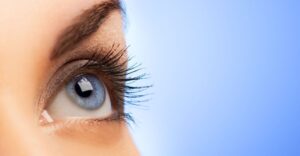Clinical Features of Epilepsy
Epilepsy is clinically characterized by loss or excess of motor, sensory or autonomic functions with or without alteration in consciousness. Its clinical features are: Grand Mal epilepsy, absence attacks (Petit Mal), Myoclonus, atoni seizures, Infantile spasm, reflex epilepsy, partial epilepsy etc. The last four clinical features would be elaborated.
Absence attacks (Petit Mal): These are seen in children and are distinguished by brevity and absence of motor phenomena. The attacks come on without any warning and consciousness is lost only for a brief period. The child abruptly stops all motor activity and speech. There is a vacant stare. External stimuli fail to evoke any response from the patient. These attacks usually last for 2-10 sec, after which the patient resumes the pre-seizure activity. At times there may be clonic movements of the eyelids or occasionally automatisms like smacking of lips or chewing movements. The attacks can be precipitated by hyperventilation. The EEG abnormality in petit mal is diagnostic. It shows classic “three per second” spike and wave discharges. The attacks occur several times during the day, but they become less frequent or may even disappear in adolescence. Sometimes these may be replaced by grand mal seizures.
Myoclonus: This refers to brisk, brief muscular contractions involving a whole limb, a single muscle or its part. The movements are generally abrupt and uncontrollable and render the patient momentarily helpless. The attacks may occur as a single jerk or may recur every few seconds. The abnormal electrical discharges may arise from the cerebral cortex, brain stem or spinal cord. Usually myoclonus is associated with other forms of epilepsy like absences or grand mal.
Atonic seizures: These are characterized by sudden loss of postural tone and consciousness without any other motor phenomena. This may lead to sudden “drop” of the individual to the floor without any warning. Atonic seizures have to be distinguished from cataplexy in which the drop attacks are not accompanied by loss of consciousness.
Reflex epilepsy: Epilepsy precipitated by certain stimuli has been designated as reflex epilepsy by some authors. The common stimuli which precipitate reflex stimuli are hot water bath of the head, photic stimulation such as flickering light, reading, hearing music, startle and eating. Benefit is derived by avoiding the epileptogenic stimulus and conditioning procedures.
Partial epilepsy: Focal or partial motor seizures are due to a discharging epileptic focus in the opposite frontal lobe. They consist of clonic movements of the thumb and angle of mouth or turning of the head or eyes. These movements may constitute the entire motor component of the seizure or may be followed by generalized clonic movements and loss of consciousness. The term Jacksonian motor seizures (Jacksonian epilepsy) is applied to the type where clonic contractions start in the fingers of one hand, one side of the face or the foot and slowly spread (march) to the other muscles on the same side of the body. This may or may not be followed by involvement of the opposite side and loss of consciousness. The presence of the characteristic march distinguishes Jacksonian serizures from partial motor seizures. However, both have the same localizing significance.



